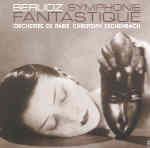Berlioz would not have liked this performance. He was a conductor in the “classical” vein, who favored steady speeds and clean rhythms. Eschenbach, on the other hand, belongs to the Wagner/Furtwängler school of flexible tempos and this, combined with his fussiness in phrasing, doesn’t work at all well in this music. His hopelessly slow first movement introduction leads nowhere, and thereafter his “stop and start” approach makes musical hash of the music’s linear continuity. A splendidly light and characterful waltz (the highpoint of the performance), leads to an unacceptably droopy slow movement whose “distant thunder” coda lacks any vestige of atmosphere–a function of dry recorded sound and Eschenbach’s exaggerated dynamics. The march moves too quickly, with brass playing both tame and rhythmically slack, conveying little of the requisite swagger.
As for the finale, the tinny bells and wimpy winds combine with Eschenbach’s spasmodic sectional italicizing to leave the music’s inherent color and grotesquerie in the dust. And where, for heaven’s sake, is the brass in the score’s final bars? There are certainly moments, particularly in the first movement, where careful attention to dynamics and instrumental balances produces a fresh or ear-catching result, but more often than not this micro-managed effort saps the music of spontaneity and wildness. In short, this well behaved but mannered performance says more about the conductor than it does about Berlioz. Definitely not a keeper.
































